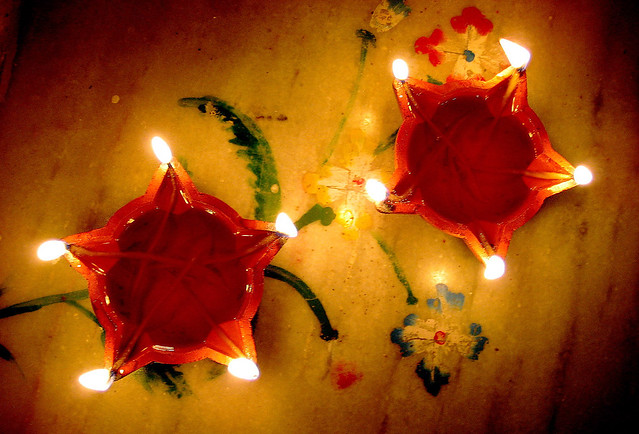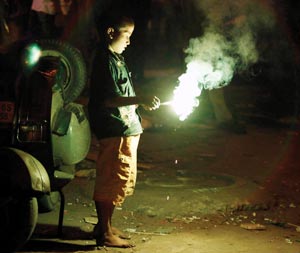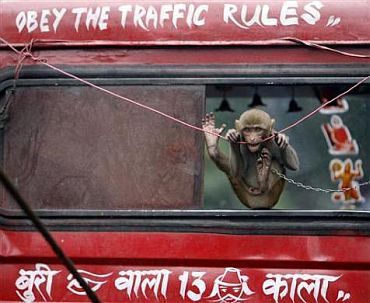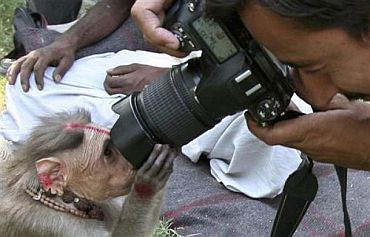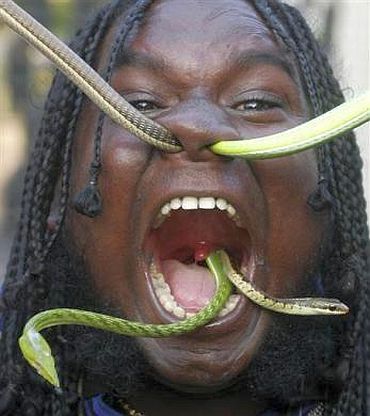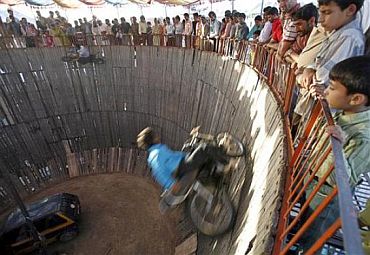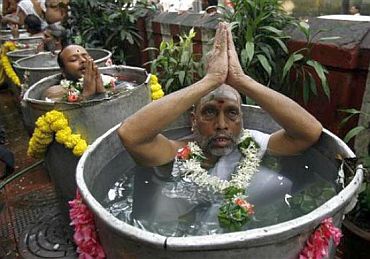You have freshly painted your home and redone the decor for the festive season. Now it is time to bring in that spark of excitement and what better way to do that than with an array of colourful lights. After all, Diwali is the 'Festival of lights'.
From the traditional diyas to funky modern lamps, you can use lights to transform your home into a splendid haven for your family and friends.
DIYA MAGIC
"We have special colourful earthen lamps called pantis that we use to decorate our homes during Diwali," says Gaurita Wagh, a Maharashtrian. "Traditionally, these pantis were filled with ghee and then lit," she explains.
But today you can take these little diyas and place lit wax tea lights in each of them. Try arranging them at strategic points around your rangoli.
If you are looking for something that you can use year after year, pick up a large metal diya, fill it with water and set afloat a couple of tea lights. It will make a great centrepiece. You can buy these from stores like Good Earth or Lifestyle.
"Having 14 diyas is auspicious because Lord Rama returned home after 14 years of exile from the forests," Himika Ganguly, a Bengali explains.
Quick tip: Choose tiny earthen pots that can fit just a single tea light and use them to decorate your balcony ledge. They are available in a variety of colours, decorated with mirror, tinsel and the works.
FASCINATING LANTERNS
 "Kandeels (paper lanterns) are an exciting part of our Diwali decorations," says Gaurita. They are hung outside the door and are generally made of red and yellow crepe or sandwich paper. It is said the lantern is guiding light for Lakshmi, the goddess of wealth.
"Kandeels (paper lanterns) are an exciting part of our Diwali decorations," says Gaurita. They are hung outside the door and are generally made of red and yellow crepe or sandwich paper. It is said the lantern is guiding light for Lakshmi, the goddess of wealth.So go ahead, welcome prosperity into your home and drive away evil with colourful lanterns. Local markets are the best place to get crepe, sandwich and handmade paper lamps.
River lights are a new trend in lanterns. They are standing lanterns made from coloured glass and brass that can be used to decorate any surface, be it a coffee table or a verandah. A row of river lights can be quite charming focus point.
Quick tip: You could even try Arabian brass lanterns with decorative holes in it. Try either wax candles or tiny light bulbs inside them and watch the soft coloured glow spread around your home!
SCENTED CANDLES
The soft glow of candles is enough to make you feel warm inside. But imagine the added aroma of vanilla or lavender filling the air. Heavenly, isn't it?
You can try pillar candles, candles carved in unique shapes or ones with printed motifs on them too. You could use ornate candle stands or holders to display them.
Depending on your budget, you can pick candles from high-end stores like The Faraway Tree or more economical ones like Lifestyle or Home Stop.
STARRY ATTRACTIONS
Rice lights, though not a very traditional idea, are a great way to decorate window grills. You could even drape them like a valance at the top of your doorway if you are not using garlands. Rice lights are available at any store that has party decorations.
If you have tall potted plants in your balcony or even at the entrance to your home, try wrapping a small string of lights around them. It will add that festive glam to your surroundings.

